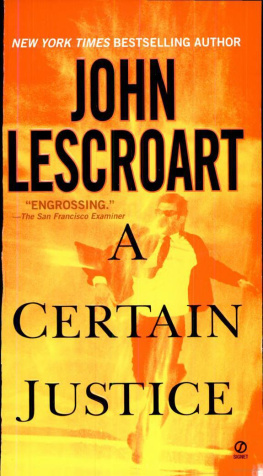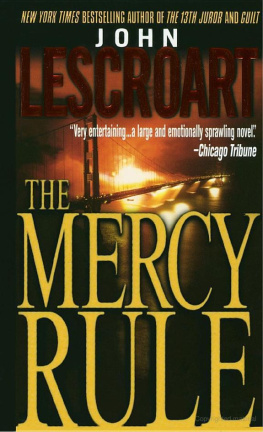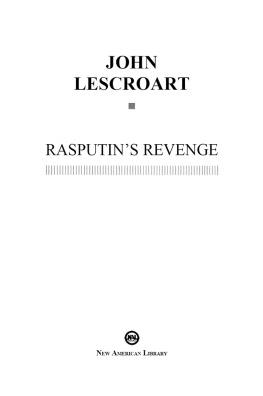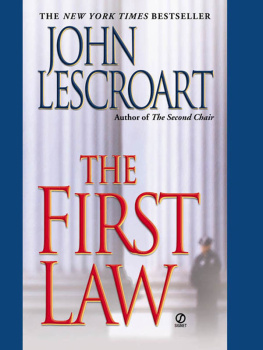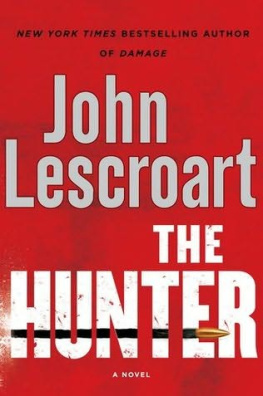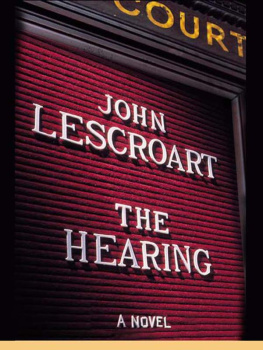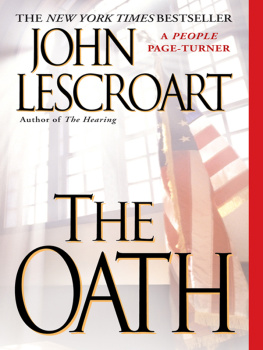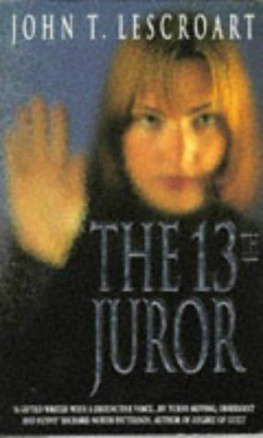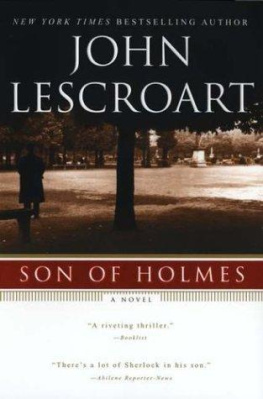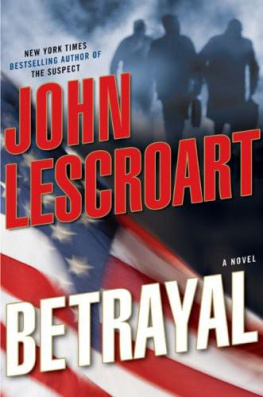John Lescroart - A Certain Justice
Here you can read online John Lescroart - A Certain Justice full text of the book (entire story) in english for free. Download pdf and epub, get meaning, cover and reviews about this ebook. year: 1995, genre: Detective and thriller. Description of the work, (preface) as well as reviews are available. Best literature library LitArk.com created for fans of good reading and offers a wide selection of genres:
Romance novel
Science fiction
Adventure
Detective
Science
History
Home and family
Prose
Art
Politics
Computer
Non-fiction
Religion
Business
Children
Humor
Choose a favorite category and find really read worthwhile books. Enjoy immersion in the world of imagination, feel the emotions of the characters or learn something new for yourself, make an fascinating discovery.
- Book:A Certain Justice
- Author:
- Genre:
- Year:1995
- Rating:4 / 5
- Favourites:Add to favourites
- Your mark:
- 80
- 1
- 2
- 3
- 4
- 5
A Certain Justice: summary, description and annotation
We offer to read an annotation, description, summary or preface (depends on what the author of the book "A Certain Justice" wrote himself). If you haven't found the necessary information about the book — write in the comments, we will try to find it.
A Certain Justice — read online for free the complete book (whole text) full work
Below is the text of the book, divided by pages. System saving the place of the last page read, allows you to conveniently read the book "A Certain Justice" online for free, without having to search again every time where you left off. Put a bookmark, and you can go to the page where you finished reading at any time.
Font size:
Interval:
Bookmark:
Copyright 1995 John T. Lescroart
To Alan Heit and To Lisa Marie Sawyer the reason God made California
Several generous and talented colleagues bear witness to the reality that it's not such a cutthroat world out there after all. I have to single out Karen Kijewski as a constant source of inspiration, support and ideas when the well runs dry or the creek don't seem it's ever going to rise again. She is a great writer and an even better friend.
Also thanks to Dale Brown and Bill Wood for the 'attitude check' when it was sorely needed; Dick and Sheila Herman; Dennis Lynds and Gayle Stone; Brian Garfield for not cutting his hair too soon; and Rick Patterson and Jon Kellerman, both of whom found something to like and were kind enough to say it.
In San Francisco I'm indebted to those people who lent their time and expertise to try and keep this story within the realm of 'reality-based' fiction Assistant District Attorneys Bill Fazio and Jim Costello; Supervisor Kevin Shelley (and from his office, Mindy Linetsky and Eric Merten); and John L. Taylor, Clerk of the Board of Supervisors.
To the others whose contribution is ongoing sisters and brothers and in-laws, Al Giannini, Don Matheson, Mike Hamil-burg and Joanie Socola, and especially Justine Rose and Jack Sawyer your support is invaluable. Thank you.
Finally, I must gratefully acknowledge the tireless efforts of Don Fine, Carole Baron, Leslie Schnur, Dave Nelson, Mike Geoghegan, Bernie Kurman, Bob Gales, Jason Poston, Fred Huber, and my dear friend Jackie Cantor. What a great team.
Our progress in degeneracy appears to me to be pretty rapid.-Abraham LincolnTo those white people who have whatever hang-ups they have, get over it.- Marion Berry
Pain reaches the heart with electrical speed, but truth moves to the heart as slowly as a glacier.- Barbara Kingsolver
At about eight-ten on an unusually hot and sultry Monday evening a couple of weeks before the Fourth of July, Michael Mullen, a thirty-nine-year-old white accountant with a wife and three children all under eight, stopped his new black Honda Prelude at the corner of 19th and Dolores in the outer Noe Valley District of San Francisco. Dolores is a divided street with a wide grassy area occasionally pocked with trees between the north and south lanes.
According to witnesses, a young black male was walking in this divider strip when Mullen pulled up to the stop sign at 19th. The driver immediately behind Mullen, a kid named Josh Cane, noticed that, with the heat, Mullen had his driver's window open, his elbow sticking out resting on it.
The young man in the divider strip, who'd been walking north, the same direction both Mullen and Cane had been driving, closed the remaining feet between himself and Mullen in a couple of athletic bounds, 'like he was jumping over some mud or something.' (Rayanne Jonas, fifty-six, an African-American day-care provider, walking home from the center on Army, where she worked.)
'I saw he was already holding something, which then, I mean at that time, I thought was a pipe, and then I realized.'
It turned out it was a gun, which the man stuck into Mullen's temple. He pulled the trigger. The report was loud enough that Cane in his car with his windows up and his air conditioner blasting heard it 'like a crack of thunder.'
The only witness with the wherewithal to move in the following seconds, to try to do anything at all, was a fifteen-year-old Hispanic youth named Luis Santillo, who was on his way home from his after-school job at the fast-food place down the street on 16th and Guerrero. He, too, saw the athletic man take the leaps, aim the gun, and fire.
'Hey!' he yelled. 'What the hell...' He started running toward Mullen's car.
Meanwhile, ignoring Luis and everything else, the assailant pulled the door of the car, reached in, grabbed, and with one hand pulled Mullen out, lifted his wallet, and dumped his body on the street.
Luis, twenty feet in front of the car and still coming, still yelling, froze as the vehicle accelerated, the driver's door swinging half-open. The car fishtailed slightly on the pavement, corrected, then jumped forward through the intersection, its left bumper hitting Luis, bouncing him first off the hood and windshield, and then throwing him seventy-six feet into a juniper bush in the divider strip, which saved his life, although the pins in his hip would probably prevent him from ever jumping athletically like the shooter.
The car, gaining speed, 'went off like a rocket, just going and going 'til it was out of sight.' (Riley Willson, a car mechanic at his own shop, Riley's Garage, on the northeast corner of 19th and Dolores).
On June 19, the car or what was left of it was recovered. Its doors were gone, as were the tires. The body had been tagged by what must have been every kid with a can of spray paint in the neighborhood. The car had been abandoned on Moscow Street hard by the Crocker-Amazon Playground, a common dump spot south of the 280 Freeway, almost to the city limits.
Besides the traces of cocaine, marijuana seeds and roaches, beer cans and other debris, the car yielded such a beautiful fingerprint in blood on the back side of the steering wheel, that Shawanda Mboto, the San Francisco Police Department specialist in these matters, let out a warwhoop from her perch by her microscope.
It took less than a day to verify that the blood was in fact Michael Mullen's. The fingerprint belonged to an African-American career criminal named Jerohm Reese.
Jerohm Reese was twenty years old. He had first visited the Youth Guidance Center at the age of fourteen when, without a regular domicile, he was convicted in juvenile court of stealing a pair of Air Jordan tennis shoes from Ronda Predeaux after he had beaten him up.
His 'accomplice' in that crime the boy who had held Ronda down by kneeling on his upper arms and pounding away at his face while his shoes were stripped off was another youth, Wesley Ames, better known as Tooth because he only had one left on the top, right up-front.
Over the next four years Jerohm Reese acquired a juvenile rap sheet, mostly stealing and, when he needed to, doing some minor violence, often with his fists, although once he used a metal pipe and once a rock.
He spent his eighteenth birthday in a courtroom. Though Jerohm had not yet turned eighteen when he robbed the Portola Liquor Store on Ocean, this time he had had a gun in his possession, which on his arrest he said had been a toy. (Jerohm's toy never located had given a concussion to Meyer Goldsmith, the owner.)
Jerohm's public defender, Gina Roake, had prevailed with her argument for leniency, on the grounds that technically this was Jerohm's first offense (as an adult). Whether persuaded by this argument or exhausted at the end of another long day at the bench, Municipal Court Judge Thomas Langan had sent Jerohm upstairs to the county jail for a year, of which, due to the overpopulation of the jail, he served five months and twenty-one days.
Between the ages of eighteen-and-a-half, when he got out of jail on the Portola robbery, and twenty, when his bloody fingerprint was identified on Michael Mullen's steering wheel, Jerohm kept a low profile, and though he was brought to the Hall and questioned several times, he was charged with no new crimes.
Although Jerohm lived and hung out mostly in the Bay View district between Hunter's Point and Candlestick Park one of the coldest and most inhospitable environments in the state at about midnight on June 21-22 he was arrested by an African-American inspector sergeant of homicide named Ridley Banks as he exited the Kit Kat Klub just north of Laguna, a long walk from Candlestick, after his presence had been reported by that establishment's owner, Mo-Mo House, who had some sort of arrangement with Sergeant Banks. Accustomed to the drill, Jerohm offered no resistance.
Font size:
Interval:
Bookmark:
Similar books «A Certain Justice»
Look at similar books to A Certain Justice. We have selected literature similar in name and meaning in the hope of providing readers with more options to find new, interesting, not yet read works.
Discussion, reviews of the book A Certain Justice and just readers' own opinions. Leave your comments, write what you think about the work, its meaning or the main characters. Specify what exactly you liked and what you didn't like, and why you think so.

